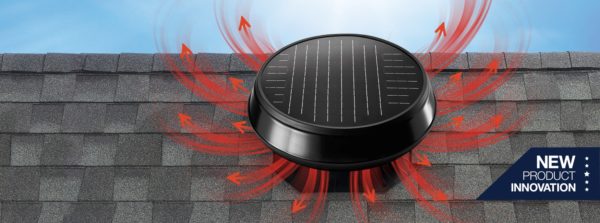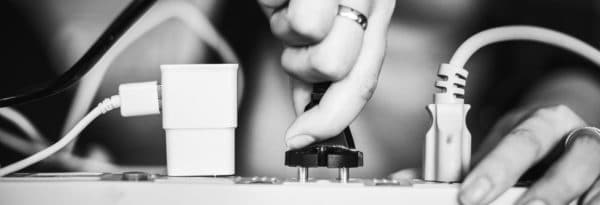If any of the following points sound familiar, then it might be time to begin thinking about ways that you can reduce your daily energy consumption levels.
1. The Energy Bills Are Constantly Increasing
If you find the cost of your household electricity continues to climb each month, there are many great ways that you can take a proactive approach to cut the issue short. While the rising price of electricity is a factor, there are also often issues with consumption that contribute to the problem.
To help reduce your daily consumption, firstly, check that there isn’t an issue that is resulting in the bill increase. For example, perhaps the refrigerator seal on is worn out, making it work harder to keep things cool and consuming more energy. Alternatively, maybe your air conditioning unit has not been serviced in a while and is consuming more power than necessary.
Also, let your family or housemates know about the issue, perhaps they’ve gotten into the habit of leaving the lights or heating unit on when they leave the house. Encourage them all to be aware of their energy consumption and to do their bit for the electricity bill.

2. The Air Conditioner or Heater Are Always Running
One of the biggest culprits in terms of electrical usage in the home is temperature control. It’s super easy to use cooling and heating devices complacently and when it isn’t necessary. That being said, it’s more important than ever that people choose to consume energy in an environmentally responsible way, as well as being fiscally responsible.
A good idea is to make it a household policy that all temperature control devices are switched off when you leave the house. If you have a digital thermostat, you can even program it to automatically switch on and off and reduce unnecessary usage. For instance, you could have the system automatically switch on an hour before you get home from work and then switch off at the time the sun goes down. This is an effortless way to reduce usage and watch the electricity bills drop.
3. Outdated Appliances
Energy efficiency standards have progressed incredibly in recent years due to new innovative technology and appliances. Why fix what isn’t broken? Even though your old heating or cooling unit may still be functioning properly, it may be wasting more energy than it is worth. Many homeowners continue to use their outdated appliances until they breakdown believing that this is the more fiscally responsible option, when in reality, with all the available incentives and energy savings, there is often far more to gain from upgrading. In addition to energy savings, some shiny new appliances will help to modernise the look and feel of your home.
4. It is Unclear How Much Electricity is Being Consumed By What
If you’re unsure of exactly why you are paying so much for your electricity every month, it may be time to take advantage of an energy audit system. You may be surprised to learn exactly what types of energy usage that your hard-earned money is being spent on. Once you learn what is using the most energy in your home, you will be able to cut down and improve your consumption habits.

5. The Attic Space is Always Hot (or Cold)
Many households are unaware of how the temperature of the attic or roof space affects the overall temperature of the home. During the peak of the summer months, attics and roof spaces are likely to overheat, this excess of static heat quickly sinks down into the lower levels of the house making the home an uncomfortable temperature. If this issue is left unresolved, the heat can result in the build-up of mould and mildew which can damage the structural integrity of your house, leading to expensive repairs in the future.
There are some easy solutions to this all too common energy waster. By installing an energy-efficient Solar Star Solar Roof Ventilation System, you can remove excess heat from the home, giving you a comfortable indoor temperature and lower energy bills. In addition to roof ventilation, you can also install a whole house fan that naturally improves the overall air quality and improves temperature control in the home.
6. Hidden Culprit: Ghost Power
Have you ever thought about how much energy all of those appliances and household items that you leave constantly plugged in are actually using? An electrical item that is left plugged into an outlet, will continue to consume a certain amount of electricity. Although it may not be considered a large consumption, when it is happening all through the house, this consumption of “ghost power” can quickly add up.
Don’t fret though, as there are simple ways to combat this common issue. It is difficult to ask the member of your household to unplug every item after they’ve used it, so instead look at using power bars with power switches that allow you to conveniently turn off multiple electrical devices and appliances all in the flick of one switch.

7. Not Making Use of Natural Light
If your home doesn’t have sufficient sources of natural light, you may often resort to leaving light bulbs switched on all day and night. People often underestimate the energy impact of leaving on a single light bulb, let alone having multiple switched on throughout the house all day.
Lucky for you there are plenty of simple ways to take advantage of the natural light sources in your home and cut down on power usage during the day. A home that already has skylights can upgrade to an updated model that uses heat resistant, energy-efficient materials. Innovative Solatube tubular skylights are a fantastic solution for homes where the roof is blocked by an attic.
For more information about daylighting and ventilation that can reduce the cost of electricity, Contact the experts at Solatube a call on 13 16 19

